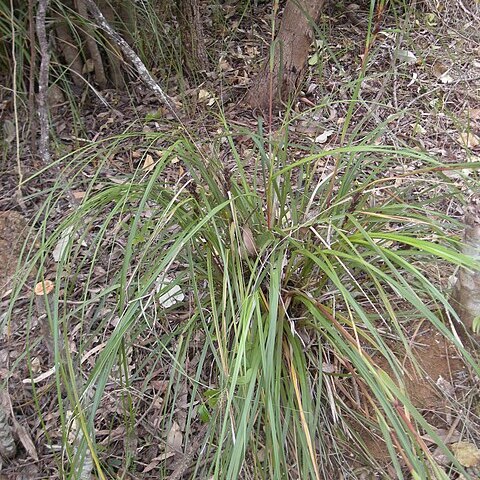Stems smooth, (20-)30-90 cm by 3-8 mm. Leaves longer than the stems, strongly narrowed from a broader base, with scabrous inroiled margins; sheaths stramineous to shining dark brown. Inflorescence spike-like, oblong, subcylindrical, rigid, dense at the top, usually slightly interrupted at the base, (5-)10-25 cm by 3-5 cm, consisting of 7-10 fascicles of short (2-3½ cm long), dense, oblong to oblong-ovoid secondary panicles; primary branches 2-3 together, short, rigid, included by the sheath. Lower bracts dilated at the base, much overtopping the influorescence; sheaths blackish brown. Spikelets densely crowded, shortly peduncled, broadly ovoid to globose, 6-8 mm long, 1-flowered. Glumes 7-8, blackish brown, the lower 4-5 empty, from an ovate base contracted into the long-acuminate involute apex, mucronate; upper 3 glumes smaller, broadly ovate, rounded at the apex, very shortly cuspidate, ciliolate. Stamens 4-6; filaments accrescent, finally 10-13 mm long, sparsely ciliolate on the margins, included by the inrolled apices of the 2-3 upper sterile glumes; anthers 1½-2 mm long; appendage of the connective short, ¼ mm. Nut globose-ovoid to ovoid, very obtusely trigonous to almost terete, mucronate, smooth, shining reddish brown to dark castaneous, 4-6 by 3-4 mm. Endocarp not grooved. Fixing-mechanism.
More
A tufted sedge. It forms clumps and keeps growing from year to year. It grows 0.5-1 m high and spreads 0.5-1.5 m wide. The stems are slender. The leaves are 80 cm long and narrow. They are rough on the underside and have a channel on top. The flowering stalk is long and erect. The seed heads are in dense spikes at the ends of the stalks. It has dark brown seed heads. The seeds turn orange as they ripen and remain attached on a thread for a time. The nut is about 0.5 cm across. These seeds are edible.

